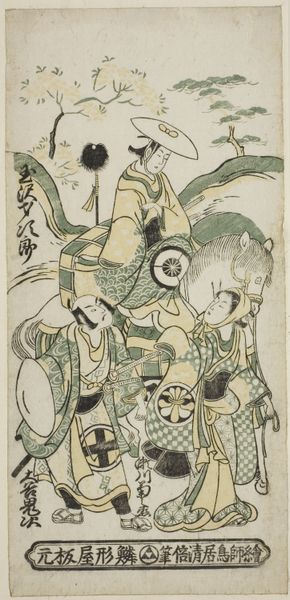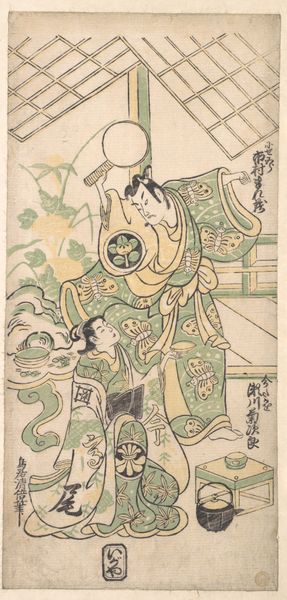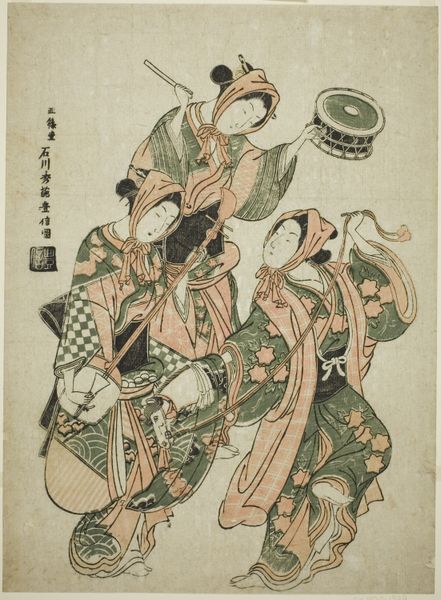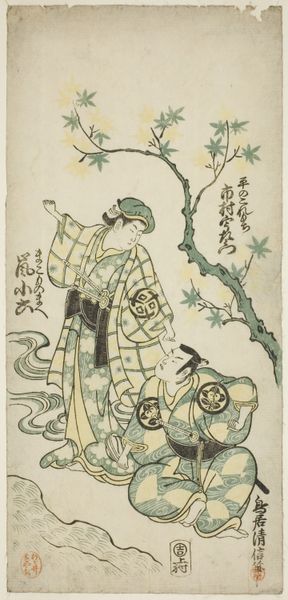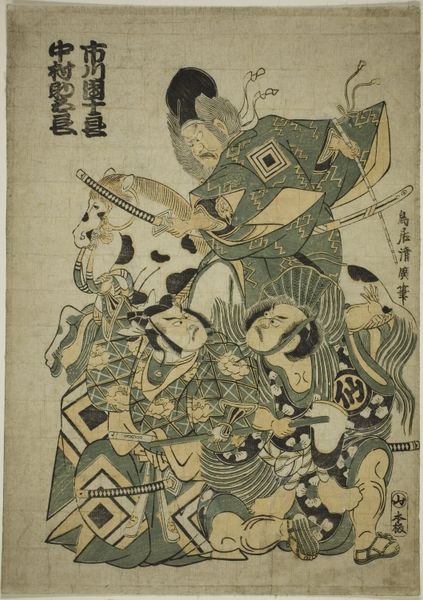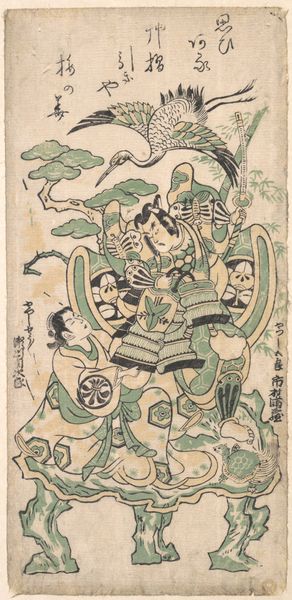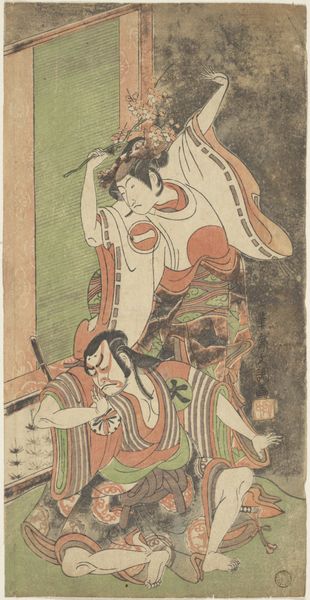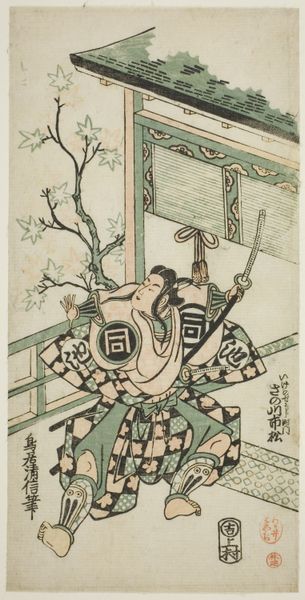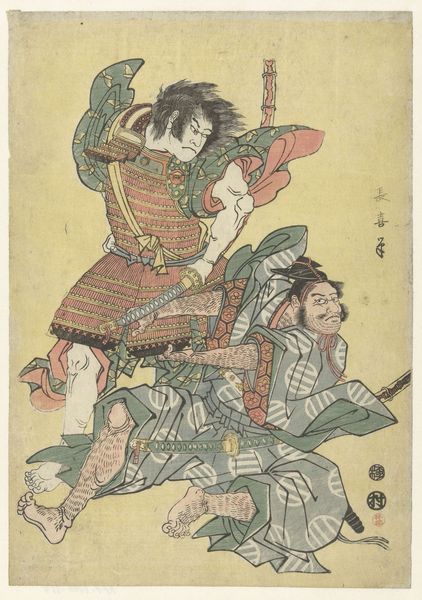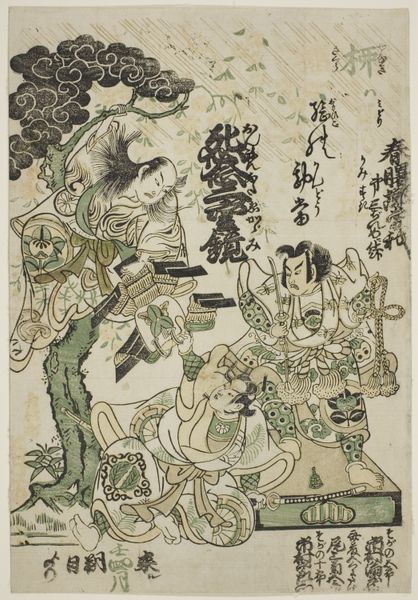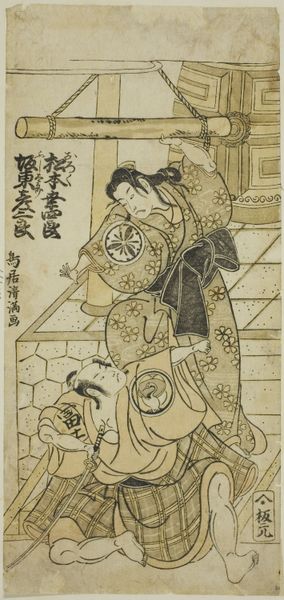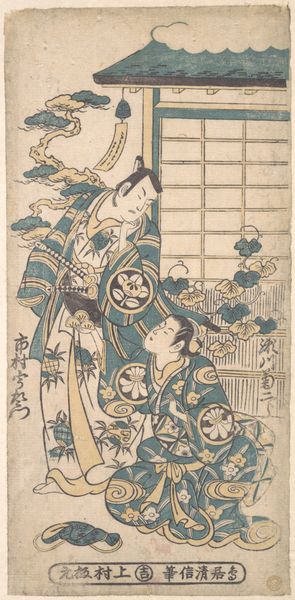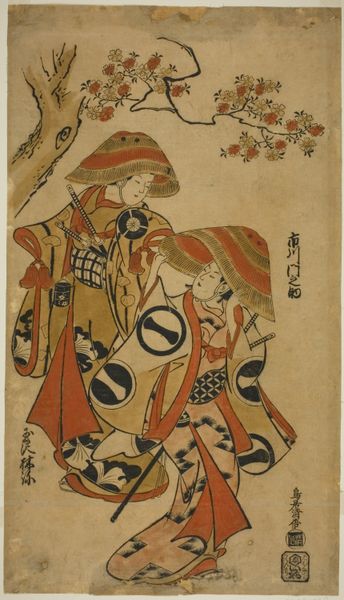
print, woodblock-print
#
ink drawing
#
narrative-art
#
pen drawing
# print
#
asian-art
#
landscape
#
ukiyo-e
#
figuration
#
woodblock-print
Dimensions: 12 1/2 x 5 7/8 in. (31.8 x 14.9 cm)
Copyright: Public Domain
Curator: Here we have a woodblock print titled "Scene from a Drama" by Torii Kiyomasu I, created sometime between 1740 and 1760. You can find this Ukiyo-e artwork here at the Metropolitan Museum of Art. Editor: It’s fascinating how much it conveys with such a restrained palette, almost a gentle, muted sadness in the actors' faces and in that melancholic landscape. Curator: Precisely! Kiyomasu was known for his flair for drama and his ability to imbue his prints with theatricality, capturing a moment frozen in time like a scene lifted directly from the stage. Look closely at the texture achieved through the woodblock printing technique. Editor: It looks like a limited colour palette— primarily yellows and greens. Woodblock printing involved carving the image into wood, applying ink, and then pressing it onto paper. Can you speak more about the materials and techniques behind ukiyo-e prints like this one, and where Kiyomasu fits within this art ecosystem? Curator: He was deeply involved. Think about the paper—thin, absorbent—made traditionally from kozo fibers, the mulberry bush. The ink itself meticulously mixed using pigments derived from plants and minerals. The woodblocks would be cherry, chosen for their fine grain and workability. It's a world of artisans converging. Kiyomasu was also part of this larger system in which publishers had so much power. These images fed the Edo period desire to have images of popular culture like actors and scenes from the theatre in print form. Editor: So, consumption as part of everyday life even in the eighteenth century. How does this allude to themes of gender and performance within Japanese culture? Curator: Absolutely. You have these kabuki actors portraying roles, often gender-bending ones. Consider that figure on horseback - is it male or female? It's purposefully ambiguous, blurring the lines, celebrating the fluid nature of identity within the theatre. We’re asked to consider the labor involved. It wasn’t only Torii who created these; an artisan community was deeply embedded. Editor: Looking at "Scene from a Drama", it evokes the transience of emotions. Seeing this art really calls us to contemplate the collaborative world from which this print emerged.
Comments
No comments
Be the first to comment and join the conversation on the ultimate creative platform.
